Eiriksstadir Viking Longhouse Travel Guide
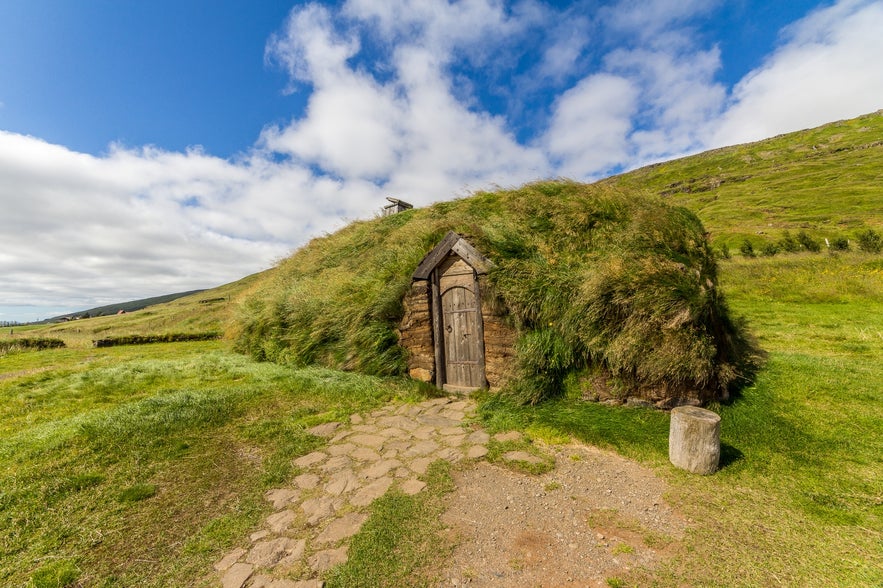
Located in Haukadalur Valley, the ruins on-site are believed to be the ancient homestead of legendary explorer Eric the Red. While not proven conclusively, the location of the ruins matches the descriptions of the Icelandic sagas.
The Eiriksstadir site includes a replica of a Viking turf house and the ruins of the original structure. You can visit the Eiriksstadir longhouse as part of an 8-day self-drive tour of West Iceland. You can hire a car to explore the region’s best sights and attractions at your own pace. Alternatively, you can reach the longhouse on a 13-day self-drive Ring Road tour that allows you to visit nearly all of Iceland.
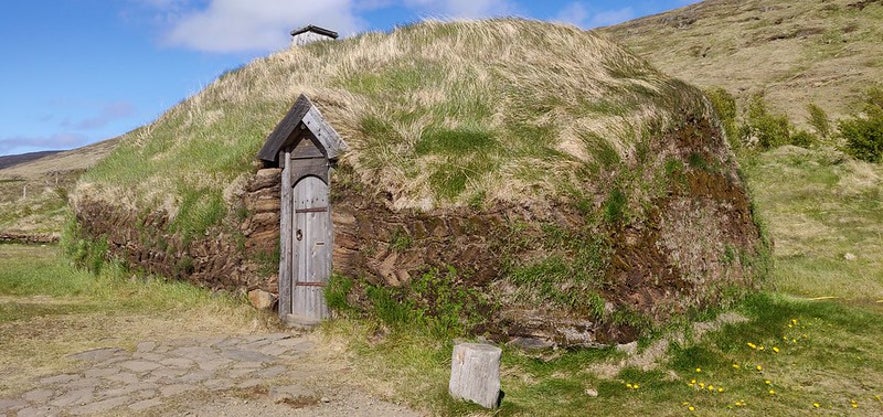
Photo from Flickr, Creative Commons, by Alf Igel. No edits made.
History
Erik the Red, also known as Erik Thorvaldsson, was a Norse explorer and the founder of the first Norse settlements in Greenland. He was born in Norway around 950 AD and later moved with his father, Thorvald Asvaldsson, to settle in Iceland. However, due to his involvement in various conflicts and acts of violence, Erik was eventually exiled from Iceland.
Erik the Red established his home at Eirikstadir along with his family, including his son Leif Erikson. It was from Eiriksstaðir that Erik set out on his voyages and eventually discovered Greenland, leading to the establishment of Norse settlements there.
In exile, Erik set sail and discovered a landmass to the west of Iceland, which he named "Greenland" to attract potential settlers. He returned to Iceland and successfully convinced a group of people to join him in establishing a settlement on the newly discovered Greenland. In 985 AD, Erik and his followers arrived in Greenland and established two main colonies, known as the Eastern Settlement and the Western Settlement.
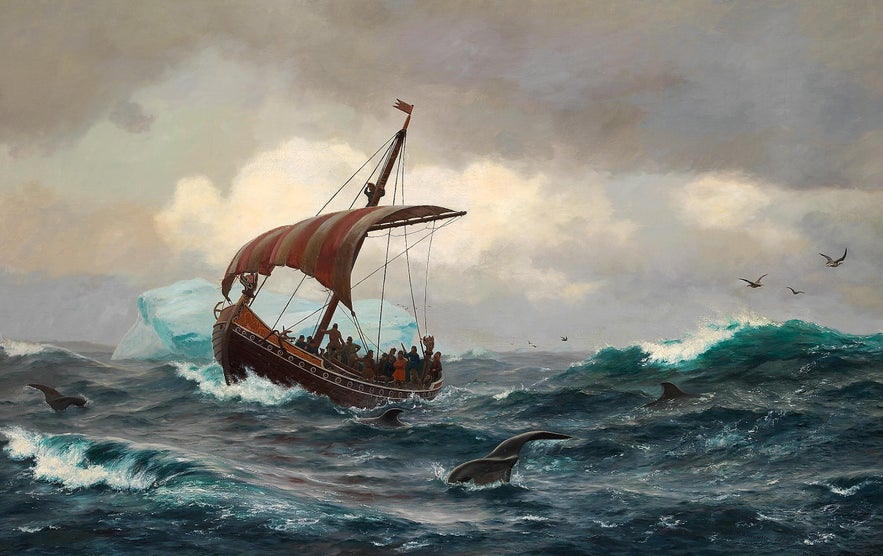 Erik's leadership played a crucial role in the successful establishment and growth of the Greenland colonies. Despite the harsh and inhospitable environment, Erik managed to lead the Norse settlers in adapting to their new surroundings. He established trade relationships with the indigenous Inuit people and promoted agriculture and livestock farming, making Greenland a sustainable settlement.
Erik's leadership played a crucial role in the successful establishment and growth of the Greenland colonies. Despite the harsh and inhospitable environment, Erik managed to lead the Norse settlers in adapting to their new surroundings. He established trade relationships with the indigenous Inuit people and promoted agriculture and livestock farming, making Greenland a sustainable settlement.
Erik's son Leif is usually credited with being the first European to reach North America, as he sailed from Greenland to a landmass he called Vinland. The exact location of Vinland is uncertain, but it is believed to be somewhere along the eastern coast of Canada.
Things to Do at Eiriksstadir
During a visit to the Eiriksstadir, visitors can view a historically accurate replica of a 10th-century Viking longhouse. This will surely give them a genuine appreciation for Viking craftsmanship and architecture.
Visitors also get to see the ruins of the original longhouse, which are more than 1,000 years old. The staff dress in Viking costumes, and the attraction also has replicas of Viking tools, weapons, and clothing. It’s a fun and interactive way to learn about Viking culture.
There’s also a food truck at the longhouse site where visitors can buy traditional Viking food or modern-day sandwiches.
Where Is the Eiriksstadir Longhouse Located?
The Viking Longhouse Eiriksstadir is situated in West Iceland, 10.8 miles (17.4 kilometers) Southeast of Budardalur village. It’s approximately 90 miles (about 150 kilometers) north of Reykjavik, between the Snaefellsnes peninsula and the Westfjords.
If you’re traveling to the longhouse from Reykjavik or Borgarnes, you need to drive north on the Ring Road toward Akureyri. Turn onto route 60 toward Holmavik and continue until you reach route 586. Continue for about five miles (roughly eight kilometers), and then you’ll reach Haukadalsvatn lake. The longhouse is on the left-hand side after the lake.
What Makes the Eiriksstadir Longhouse Special?
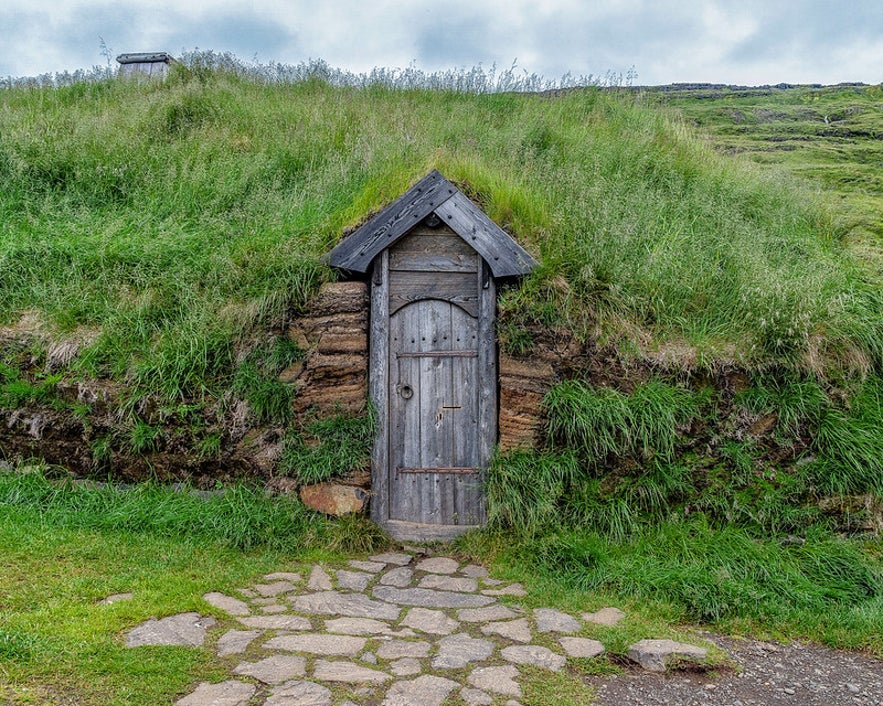 Photo from Flickr, Creative Commons, by Steven dosRemedios. No edits made.
Photo from Flickr, Creative Commons, by Steven dosRemedios. No edits made.
The Eiriksstadir Viking longhouse provides visitors an interesting and engaging way to learn more about Vikings in Iceland. Visiting here lets tourists learn more about the mythology and history of Norse travelers in Iceland in an interactive way.
Visitors will hear stories from Viking sagas and mythology, and the on-site staff will give guests information about famous Vikings like Erik the Red and his son Leif the Lucky.
The longhouse opened in the year 2000. It showcases ruins and an accurate replica of a traditional Viking house and allows visitors to put themselves in the position of a Viking.
Attractions Near the Eiriksstadir Longhouse
Thanks to its convenient location in West Iceland, visitors will find themselves close to several other sights and attractions that are well worth a visit.
The Snaefellsnes Peninsula
The Snaefellsnes peninsula is an incredible area of Iceland. It’s often referred to as “Iceland in miniature” thanks to its wide variety of natural attractions. During a visit to this peninsula, tourists can enjoy natural wonders like waterfalls, lava rocks, breathtaking volcanic craters, thermal hot springs, and magnificent glaciers.
The Eiriksstaddir longhouse is very close to the edge of the peninsula. Some of the best attractions in this area, including the town of Stykkisholmur, are less than 60 miles (roughly 100 kilometers) from the longhouse.
Waterfalls
There are several waterfalls close to the Eiriksstadir longhouse. For example, Hraunfossar is a series of waterfalls that flow across moss cliffs and lava fields. The Hraunfossar waterfall is around 60 miles (about 100 kilometers) southeast of the longhouse.
Located very close to the Hraunfossar waterfall is another waterfall, Barnafoss. This is very different in appearance from the Hraunfossar waterfall, so it’s worth visiting both to get a good idea of how varied falls in Iceland can be.
Hot Springs
Another natural attraction near the Eiriksstadir longhouse is the Deildartunguhver hot spring. This is Europe’s most powerful hot spring, pumping up to 40 gallons (180 liters) of natural water per second.
The water here is almost boiling hot, with temperatures of around 207 degrees Fahrenheit (about 98 degrees Celsius). This means it’s not suitable for swimming, but it’s an incredible place to visit to understand the power of Iceland’s thermal waters.
The Deildartunguhver hot spring is situated around 45 miles (approximately 75 kilometers) from the Eiriksstadir Viking longhouse.
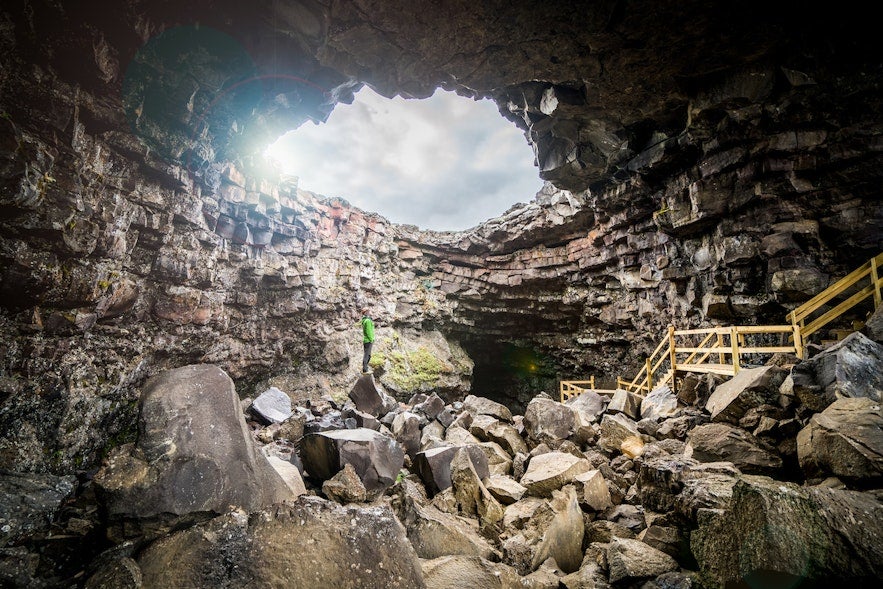
Lava Caves
If you want to visit a lava cave during your trip to Iceland, Iceland’s longest is about 70 miles (around 110 kilometers) from the Eiriksstadir turf house.
The Vidgelmir lava tunnel measures 5,200 feet (around 1,585 meters) in length and is over 1,000 years old. It sits beneath the Hallmundarhraun lava field.
This lava cave is a good option for beginners, as it has a paved walkway and lights, meaning it isn’t too challenging to walk through. It’s a fantastic place to see beautiful icicles and incredible colors of solid lava.
Volcanic Craters
The Grabrok crater is a volcanic crater around 28 miles (about 45 kilometers) from the Eiriksstadir longhouse. It’s a tall crater, standing at over 550 feet (about 170 meters) high, but it’s easy to reach the top on foot thanks to its footpath and stairs.
A visit to the top of the Grabrok crater will give you beautiful panoramic views of moss-covered lava fields, meaning it’s well worth a visit if you want some good photos.
Attractions Nearby
Popular categories

Download Iceland’s biggest travel marketplace to your phone to manage your entire trip in one place
Scan this QR code with your phone camera and press the link that appears to add Iceland’s biggest travel marketplace into your pocket. Enter your phone number or email address to receive an SMS or email with the download link.


















